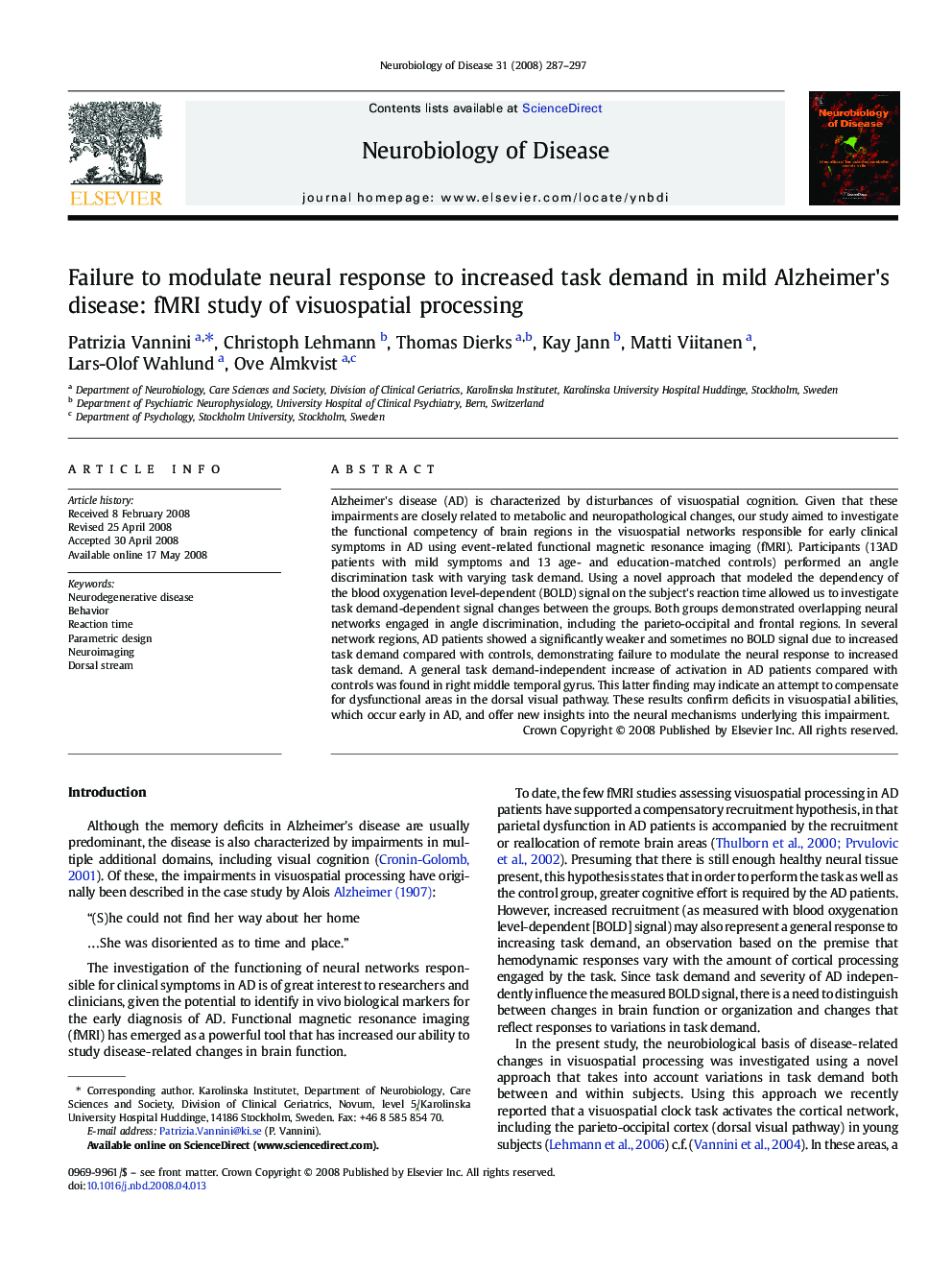| Article ID | Journal | Published Year | Pages | File Type |
|---|---|---|---|---|
| 3070345 | Neurobiology of Disease | 2008 | 11 Pages |
Alzheimer's disease (AD) is characterized by disturbances of visuospatial cognition. Given that these impairments are closely related to metabolic and neuropathological changes, our study aimed to investigate the functional competency of brain regions in the visuospatial networks responsible for early clinical symptoms in AD using event-related functional magnetic resonance imaging (fMRI). Participants (13AD patients with mild symptoms and 13 age- and education-matched controls) performed an angle discrimination task with varying task demand. Using a novel approach that modeled the dependency of the blood oxygenation level-dependent (BOLD) signal on the subject's reaction time allowed us to investigate task demand-dependent signal changes between the groups. Both groups demonstrated overlapping neural networks engaged in angle discrimination, including the parieto-occipital and frontal regions. In several network regions, AD patients showed a significantly weaker and sometimes no BOLD signal due to increased task demand compared with controls, demonstrating failure to modulate the neural response to increased task demand. A general task demand-independent increase of activation in AD patients compared with controls was found in right middle temporal gyrus. This latter finding may indicate an attempt to compensate for dysfunctional areas in the dorsal visual pathway. These results confirm deficits in visuospatial abilities, which occur early in AD, and offer new insights into the neural mechanisms underlying this impairment.
